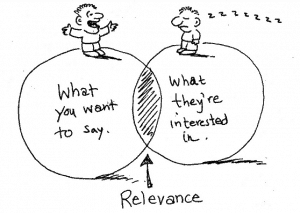Marketing isn’t easy in B2B channels. Branding efforts can be even tougher. Working with suppliers over the past 12 years, running thousands of campaigns and creating millions of transactions, we’ve seen how both suppliers and their channel partners can benefit greatly from understanding the challenges they each face when altering, governing or just syndicating their brand in the channel. Understanding both supplier and partner perspectives can help each party gain better alignment and communicate the value of their brand more effectively.
Think of a supplier’s brand like a new suit. When it is freshly pressed and fits the partner well, it benefits both the supplier who creates it and the partner who wears it. It can give buyers the impression that both supplier and partner are acting as one and mitigate any risk in making a buying decision. On the flip side, when a brand is ill-fitted to the partner, or they represent it badly like a wrinkled suit, it can alienate buyers — never allowing either supplier or partner to make it through the early stages of the buying cycle. In fact, any changes made to the brand have the potential to create even more havoc for channel partners, if not managed properly. Here are two perspectives that can assist in aligning their brand in the channel.
The Supplier Perspective
Whether joining forces with another supplier or breaking into new markets, several business decisions can impact a supplier’s brand in the channel:
- Acquisition or Merger. One path to growth for many companies, the merging of two or more companies can cause confusion for partners and their customers about their products, especially if a partner is also a reseller of the supplier’s competition.
- Market Shift. Not unique to the channel, but certainly something seen when large enterprise suppliers try to sell to smaller customers through partners. Take SAP, for example, entering the mid-market. The challenge is to differentiate the supplier’s product in that new target market; something we hear channel partners repeatedly say they need more help doing well.
- Product Changes or Updates. A new paradigm shift, like an on-premise solution moving to the cloud, can cause a supplier to update their brand, which in turn will require them to focus on driving partner effectiveness when delivering that new message to their customers.
- Creative Redesign. It’s not unique, but sometimes a company will give their brand a facelift. This can be caused by any of the previously discussed factors or can just be driven by the need to project an updated image. However simple it may seem to a supplier, creative rebranding exercises often spell frustration for partners and costly investments for both.
The Partner Perspective
Although partners can instigate rebranding activities on their own, most report it’s supplier initiatives that create branding turmoil. Here are a few issues they continually mitigate:
- Brand Realignment. Inevitably the supplier’s brand police audits their partners’ websites and marketing collateral to ensure partners are meeting branding guidelines. Though it’s worthwhile to ensure partners are meeting logo guidelines and the like, a larger issue looms when running multi-touch campaigns or making demand generation offers. Some of these start with an offer at a supplier’s site, but what good is that offer if the link to the partner’s site isn’t aligned with the branding message, or worse yet, directs the buyer to a page where they can see competitive products? Suppliers need to provide partners with a checklist of items that include links, landing pages and product placement pages to ensure they meet branding guidelines.

- Brand Collision. Partners often say that they don’t push products, they offer solutions to their customers. Some of these solutions have become vertical by industry, so a partner could offer privacy and protection to banks, while delivering speed in transactions to retail companies. When a supplier tries to drive one product-driven message, like “data system storage,” and the customer is buying “protection for banking customers,” not only does it confuse customers, but leads to poor adoption by partners who begin to realize their supplier knows little about their business.
- Multi-supplier Branding Effect. More and more suppliers are delivering products and services that comprise only one ingredient in the partner’s total solution to their customer. While channel partners, especially systems integrators, market their ability to work with multiple suppliers and products, delivering a cohesive message that describes the value each ingredient brings to the final offering eludes most partners. Leading suppliers survey their partners, learning which other complementary solutions they may also sell, then they create tailored programs that describe what value their specific product brings to the offering as a whole.
If you’re a supplier or partner who has weathered the rebranding storm, we’d like to hear from you. Share your experience in the comments below. In a future post, we’ll talk about what partners can do to keep market momentum and leads coming in during a brand shift.
Laz Gonzalez
Laz Gonzalez is Chief Strategy Officer at Zift Solutions. A prominent industry analyst and thought leader, Gonzalez brings unparalleled channel expertise to Zift and has served as strategic adviser to leading B2B channel programs worldwide.




